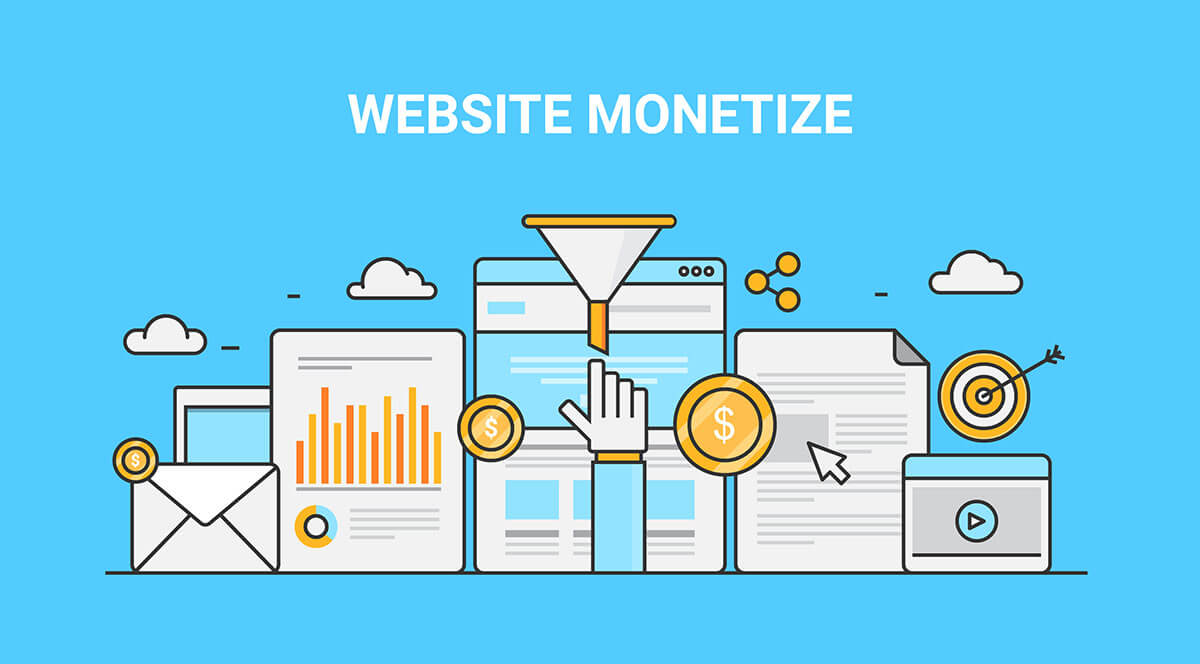How the Idea to Create a Travel Blog Was Born
Whenever my wife and I are preparing to visit a new country, we review information about the country on the Internet. In most cases, we can’t find anything that is substantially useful. To correct this situation, I’ll tell you all the secrets to developing a travel website, as well as mistakes to avoid.
How to Create a Network of Tourist Sites
Let me first demonstrate a couple of my favorite projects:
- Montenegro — the site is a year and a half old. It receives an average of 6000 views per day and is growing rapidly.
- Bulgaria — the site is six months old. It receives an average of 3000 views per day and is growing rapidly.
Step 1: Deciding Which Kind of Site You Want to Create: A Blog, Portal or Partner Site?
In my opinion, there are three main types of travel sites:
- Blog;
- Portal;
- Partner website.
Pros and Cons of a Travel Blog
A travel blog is a site with a permanent audience who is interested in the author’s personality and life. There are some pros and cons to this type:
| Pros | Cons |
| A large number of comments and discussions. | Intense competition. |
| You can build a loyal audience. | Articles must be posted regularly. If you stop writing for just two or three months, you’ll lose most of your permanent audience. |
| You can meet other interesting travelers online and offline. | Attracting traffic is hard work; it takes a lot of time. |
| There are no strict limits — you can mix travel with other hobbies (esoteric, personal development, books, photos). | People are not ready to buy something from blogs. The conversion rate is usually lower than with portals or partner sites. |
| You can collect a database of subscribers (e-mail, social network, RSS, Telegram channel). | |
| The author will have a personal brand in the future — you can sell consultations, individual tours, etc. |
For your information: For most travel blogs, the audience consists of bloggers and independent travelers. They have their own sort of click. You may think that you have a large audience, but these people won’t buy anything. They have their own blogs through which they make purchases.
Pros and Cons of a Travel Portal or Content Project
A travel portal or content project is a site that focuses primarily on providing information about a particular city, country or countries.
| Pros | Cons |
| The easiest way to attract visitors is from search engines. | Comments and discussions are minimal. |
| Most of the articles are evergreen — they are always relevant even after a year or five years. Once the site has been created, it can live for at least five years without significant updates. | There is no permanent audience. |
| There could be conditional effective monetization via affiliate programs and contextual advertising. | The site is limited by very clear frameworks. I don’t even have a place to post the article. |
| There is no way to collect a subscriber base. For such sites, social networks and e-mails are not particularly effective; it’s easier to create another site. |
Pros and Cons of an Affiliate Website
A partner site that sells flight tickets, hotels, tours — it’s all clear here. I would only say that developing such a site requires a big investment of money and time. This is the primary con, but at the same time, your investments will bring you a profit!
Travelpayouts has a convenient tool to build your own brand — White Label. It is available not only in a flight affiliate program, but also for selling hotels. At the same time, the affiliate network offers other tools that allow you to make money on the partner website. Most importantly, your visitors will be able to buy cheap tickets, get a room at the best hotel, and so on.
It’s a win-win model: You get money and visitors get what they want.
What Type of Travel Site Did I Choose and Why?
All my sites resemble travel portals, with a very small mixture of blogs; the site contains our (my wife and my) impressions, opinions and photos.
The websites I created are dedicated to specific countries and describe those countries in as much detail as possible. The articles feature very dense interlinking, referring people to the places or articles mentioned. As the clicks map metrics show, these links work very well.
The sites attract traffic from search engines simply because the sites contain very detailed information about countries that people are researching online.
Mistakes Made at the Stage of Selecting the Website Structure
- I want to create a website about all countries.Your websites should focus on one particular city, region or country and provide the most detailed information about it. Concentrating on even two countries is ineffective. A website about everything is the same as a website about nothing.
- I know nothing about the country I’m writing about.To make your site soar, you must collect the most detailed information about the places you are describing. Rewriting won’t work.
- I don’t understand where traffic comes from.For blogs and affiliate websites, never expect a significant amount of traffic from search engines. It won’t be there, at least not during the initial stage.
- I don’t know how to write articles.Quality content is expensive. Are you really sure the industry of information websites is the best place for you?

Step 2: Travel Website Creation — What, When and How Much?
Website design is a fairly simple but expensive process. Money will be needed to buy a domain, a hosting server and themes for the selected CMS.
When creating a travel blog, first choose a memorable, catchy name for the website. In our blog, you can find detailed instructions about how to choose a blog name.
If you include keywords in your travel blog, your website will be more visible in Google’s search engine results. Also, if you plan to create a travel blog that will last more than five years, try to think of a long-term name for your blog because it will be very hard to change the name later.
The second step in creating a travel website is to find hosting for your blog. What is hosting? When you build a travel blog or website, you must rent space on the Internet to save all your blog’s data, such as pictures, documents and information.
When visitors type the name of your blog, what they can easily access is stored by very large computers. Therefore, you must find an appropriate host for your blog. There are some helpful websites to find hosting, such as Hosting Kingdom.
To build a travel website, the next step is to create a theme. I recommend using WordPress with a paid theme purchased on Themeforest — they are ideal for beginners. There are hundreds, if not thousands, of instructions on the Internet on how to create a website with WordPress. Everything can be done within a day or two.
Free themes can be used, but only if their performance speed, design and functionality are 100% up to your requirements. I came across normal options but only for blogs.
How much money do you need? About $100 if you do everything yourself and about $300-$400 if you hire someone else’s services.
Mistakes During the Site Creation Stage
- I don’t have any money for the website. Without investing during this stage, you most likely won’t be able to start earning at all.
- I found a paid theme on the Internet for free.There is a 99% possibility that your theme contains hidden links or even backdoors; such sites can be easily hacked. Warez themes won’t attract traffic.
- First, I’ll get a free domain / hosting / theme, then pay when I start earning.With this approach, you most likely won’t be able to earn at all. With free hosting or a free domain, you won’t get traffic, and switching from a free theme to a paid one requires a lot of extra work.
Step 3: SEO, Website Promotion and, Once Again, SEO
There is no magic button, site code, link structure, interlinking, description, etc., that will help your site gain a noticeable advantage on a search engine results page. Ninety-five percent of the time spent reading SEO blogs is simply wasted. Buying links isn’t necessary and, without experience, it will hurt rather than help. Before offering my opinion, I will briefly mention ways to advertise your website.

Good, informative, updated and organised content: Consider the needs of your visitors and make sure your blog provides information they require. To respond to their changing needs, update your content. Connect with your visitors and develop a good rapport. Do not ignore their comments even if they leave a negative one; you want to get along with them.
Personalized email list: Send offers by email. However, know what your audience’s needs and interests are; don’t send them something they are not interested in.
Social media is another way to promote your travel website: To gather a bigger audience, use every social media channel: Facebook, Twitter, Instagram, forums, Telegram, YouTube, Snapchat and so on.
Next is SEO (Search Engine Optimization): Increase your audience size by organizing your content according to the criteria of Google or other search engines. For example, add appropriate keywords to your content so that your site is more visible in search results. Many people pay a lot for SEO tips and help. However, everything you need to know about SEO can be described literally in a couple of sentences.
- Make websites for people: Pictures (and alt attributes), headings and text are created for people. Indicators of keyword frequency, the semantic kernel, URL structure and reference mass in the tourism niche are practically ineffective.
- Article titles (H1) are, of course, for people, but here one must understand the context. If you have a blog, a good title would be: “How we spent our holiday in Nesebar for just $15”. If it’s an information site, the title could be: “Nesebar: Main attractions, photos and beaches”. If it’s an affiliate site, use “Cheap tickets and hotels in Nesebar”. The title of a blog article will be seen by people in a newsletter or newsline, while the title of an article on an information site will be seen in search engines. Meanwhile, the title of an article on an affiliate site will appear in contextual advertising. The motivation to click is different in each case.
- It doesn’t make sense to check for requests by Google Ads Planning Tool, etc.
- Perfectly described vacation resorts, attractions, seas and beaches make up the best semantic kernel. You know what is really worth writing about.
- Bounce rate is a key indicator of a web page’s quality. A bounce rate of up to 15% is normal, while 10% is good. My projects usually have up to 5%.
- Page loading speed is an important but not critical factor. If a site is rendered in two or three seconds, this is sufficient. Accelerating my sites by a rate of five times didn’t increase my traffic at all.
- Uploading your own photos provides a major competitive advantage if you have a young site. If you don’t have your own photos, upload downloaded/purchased photos. Pictures should increase in size when clicked upon. It would be nice to add a map, video or panorama — it’s not difficult and will set you apart in a crowd full of dull projects that purchased content at a cost of $2 per 1000 characters.
To learn more, check out this article called Blog Promotion tips – paid and free methods.
Popular Advertising Networks
One element that affects the size of your blog’s audience is the advertising network you choose. Here are some of the most popular ad networks you can try for your blog;
- Google AdSense
- Propeller Ads
- Revcontent
- And others.
Understand that traffic can be of varying quality. One thousand people who are interested in your blog are not equal to 1000 random people. Target your advertisements so that you’ll see a high conversion rate for sales or at least gain subscribers.
Your Repeated Mistakes
SEO is a long-term topic. If you make a mistake at the beginning, it will influence your results for a very long time. Be patient and attentive; wait for the results and don’t make mistakes.
Step 4: A Couple of Words About Writing Articles — What and How Do You Write?
During the initial stage of a website development project, the most popular articles are not descriptions of resorts or attractions. Such content is like a bottomless pit on the search engine results page; competition is very high.
Articles like “How much does food cost in Budva” would be popular. This article still fetches me a significant amount of traffic.
Ideas for Articles
What can people look for when they are visiting a country for the first time:
- How much does food cost in a supermarket/shop/restaurant?
- What are the prices for souvenirs/shopping/tours in the country?
- How is public transportation arranged and how much does it cost?
- Do the locals speak English?
- What sea/resort is in this country (water temperature, clean beaches, etc.)?
- How much money does it cost to go there?
I usually write long, detailed articles of 1000 to 3000 words. You don’t have to be too zealous. My articles of 6000+ words did not justify themselves — people don’t read them to the end, and search engines don’t rank them highly.
Articles should include photos, tips, ideas and links to the mentioned attractions, resorts and other articles.
No one is particularly interested in historical information or in the coordinates of hotels and attractions. Instead, include a map.
In your article, it’s nice to point out your personal opinion, i.e., whether you liked the place and why. After reading your article, a person should know whether he or she wants to visit the place or not.
Affiliates and advertising work well with insider articles, and even better with insider articles written especially for monetization purposes. For example, write about how to get from the airport — enumerate all possible options, such as buses, hitchhiking (if it is customary to give tourists free lifts in that country), taxis at the airport (which are usually expensive) and private transfer affiliate offers.
At the end of your articles, provide useful links. Insert them manually and choose what might be of interest to the person who just read your article. For example, if a person visits a page to read an article called “Prices in /city/”, give him or her the chance to read about food in this city, the cost of tours, ways to save money, hotels/attractions, how to get to this city from the airport, etc.
Primary Mistakes in Promoting a Travel Site
Do not include articles consisting of historical information about attractions and template phrases with small photos that do not enlarge when clicked upon.
Step 5: Launching the Site — How to Fill the Site With Useful Articles
I usually create a site, then immediately close it with a password so that only I can see it. Then I create at least 40 articles that describe everything I can relate about this country: resorts, attractions, life hacks, prices, public transportation, beaches, leisure options, tourist questions, souvenirs, etc.
Then the writing begins. When you write an article, place a link to other articles you’ve already written. If you see that it would be useful to add another article, do so. At the end, the first written article will contain a number of links to other articles which are still in the planning stage. During the same stage, neatly joining the text, add affiliate materials from the Travelpayouts Travel Affiliate Program.
When all 40 to 60 main articles are written on your site, open it to search engines.
How much time everything takes: My wife and I usually take vacations in the summer. We write articles before the middle or end of winter, at our leisure and when we’re in the right mood. The site is usually launched at the end of winter. The first more or less adequate traffic (from 500 visitors per day) is expected in two to three months. On average, I have as many as 100 articles on a website.
After launching the site, add useful articles from time to time. About twice a year, I review old articles, add cross-references to new ones and update the information.
It’s a good idea to track specific articles on Analytics. If you see that an article has a bounce rate of over 15%, that article likely requires a major review.
Step 6: Monetization and Your First Earnings From the Travel Site
Don’t hurry when it comes to monetizing a site. You can’t place contextual advertising until you get at least 2000-3000 views per day. Otherwise, the site will grow slower. I even notice a serious sag in traffic from Yandex (*a Russian search engine) after installing AdSense on my sites. There are several ways to monetize a travel blog:
- Contextual advertising;
- Affiliate marketing;
- Custom ads;
- Selling your own products.
First, contextual ads are those that are automatically shown to the visitor based on the content of your page or the interests of your visitor. Contextual advertising secures fast and stable earnings. While the main player in the international market is Google AdSense, local players such as Yandex in Russia can also help you.

Secondly, affiliate programs generate big but seasonal earnings. However, they are good in the sense that they can be used during the stage of writing articles. To earn money, your articles should sell the services – for example, flight tickets, hotel rooms, car rentals and so on. You can orient to the transactional queries.
Learn more secrets, including which articles are good for earning money not only in Travelpayouts but in any CPA affiliate network. However, if you are creating a travel website, realize that your income will be seasonal and that articles will start generating higher income when the travel season begins.
Another interesting observation is the deferred revenue (referral commission) from affiliate programs. If you have established partnerships today, you will earn money only after two or three months. People book ahead a lot, and the campaign (*third-party offer) statistics in the Travelpayouts interface is not very encouraging (*it has already improved a little and will be launched to all affiliates within a month or two).
I don’t know how to sell hotels or flight tickets, but the commission paid is comparable to my salary at my primary workplace — I have a PhD in science and lecture at the university.
Offers are another matter. Airbnb worked very well for me until it “left” (*Airbnb was exclusively in Travelpayouts for CIS geos until it closed its program). Today, transfers, insurance and car rentals sell very well. Car rentals pay a good commission, but insurance with transfers is sold much more often.
Because the tourist seasons in the countries I write about begin in the summer, and a year ago I hadn’t used an affiliate program yet, I can’t say anything specific for now. I can only say that in April, I earned 5-10 times more from only Travelpayouts campaigns than from hotels and flight tickets – I cooperate directly with some of the offers.
As for custom ads, you can work with some advertisers, selling their products to make money as a travel blogger. There is no need for an intermediary, so you’ll earn money without losing part of your commission. However, it is hard to find advertisers for travel blogs.
In addition, you can promote and sell your own product, which is a way to move beyond travel blogging to business. You can simply offer visitors your guidelines, insurance and so on.
Travelpayouts has a very helpful article on its blog about how to monetize a blog. I found it very helpful in terms of the topic of travel website monetization. If you want to learn more about travel site monetization, check out the more detailed article, how to monetize a website in 2019.
Step 7: Different Articles Generate Different Amounts of Money for a Travel Blog
The key to getting money from a travel blog is to understand exactly how to monetize a particular article.
For example, articles about specific tourist attractions are difficult with respect to travel blog monetization. Contextual advertising is cheap, the click rate is weak and an affiliate program would be out of step.
Why is this the case? Who would actually start looking for an article about abandoned temples in a jungle? It’s either a tourist who has already purchased a tour package or an independent traveler who already knows where to buy tickets or book hotels, etc.
How to make money on a travel blog. I monetize such articles by placing links to other articles. When a person reads my article, he or she also reads information about another travel service. For example, the article contains a section called “How to get there”, and now you have a few options: a link to a tour (group or individual) for this attraction, information about car rental or a story about public transportation (you can also implement a bus ticket buying system here). As a result, people move on to articles where contextual advertising is more expensive, affiliate programs look appropriate and the conversion rate is better.
It’s clear that articles about resorts can be monetized through hotels, flight tickets, transfers, etc.
A problem arises with articles written for affiliate programs. It’s hard to generate traffic to such articles from search engines, but many people visit via links from your other articles. Let’s consider the classic example of “car rental”. I have something like 1000 views for each country — the traffic for commercial requests is huge.
I always remove contextual advertising in articles written for affiliate programs. The cost per click is a few cents. The average commission for one booking is $35-$50. You can see that one booking is worth about 200 clicks on advertising. Even with a conversion rate of 1%, putting advertising on affiliate articles will be very unprofitable.
As is clear from the above, affiliate programs themselves do not work. They require you to write individual articles that are unrealistic to promote in search engines. We generate traffic to these articles from other pages of our sites, which are promoted easily and simply in search results.
Summary About How to Create and Monetize a Travel Blog
Creating a site based on my plan is a labor-intensive and complicated process. However, at the same time you’ll create a self-contained asset — a site that doesn’t require constant updates, but that still grows and generates money.




